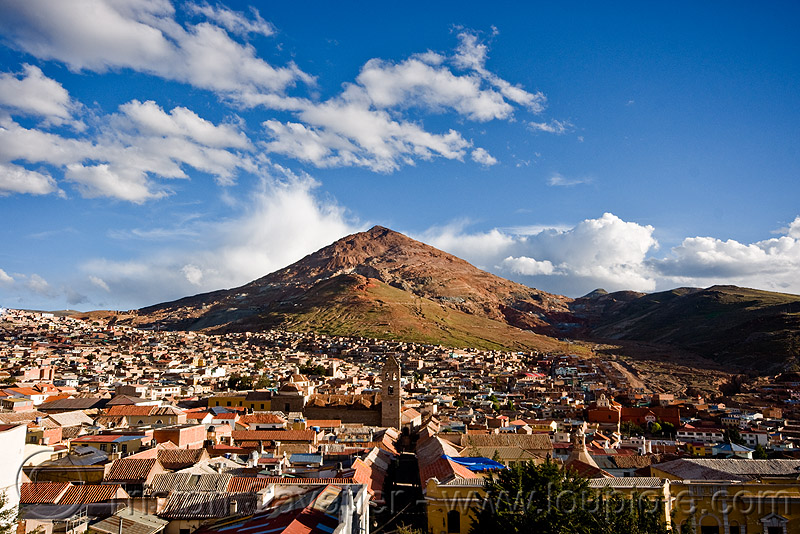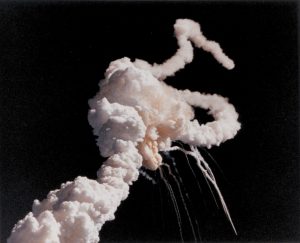In the year 1545, a man by the name Diego Huallpa accidentally discovered Potosi in Boliva, also known as Cerro Rico.1 Cerro Rico means rich mountains, which, in this case, it definitely was. When traveling between cities, Diego Huallpa was asked to climb a mountain; after getting to the top he slipped and fell and found on the side of the mountain some silver. Diego Huallpa immediately took his findings to his boss, which was a Spanish overseer at a nearby mine. Shortly after, that mountain was quickly inhabited by thousands of Spaniards and Indians. The silver of this mountain quickly drew the attention of the Spanish conquistadors. When these conquistadors arrived, they began to colonize the area surrounding the mountain.2 By 1672, the surrounding area reached its highest population of 200,000 people, and was one of the richest cities of its era.3 It became a very strong anchor for the Spanish Empire. This city sent Spain’s economy to new heights, making the Spanish more powerful than before.4
Silver during the sixteenth century was one of the most sought-after metals in all of Spain.5 The area itself surrounding the mountain was not a healthy environment, and the air was constantly filled with dust and debris. Miners were only expected to live to be around forty years old.6 To make matters worse, Potosi is the highest city in the world, making the air thin and hard to breathe. The city resides 4000 meters above sea level.7 All in all, the surrounding area was a cruel place to live, but the Spaniards stayed due to the wealth they achieved. This wealth was achieved easily for the Spanish, but came at a great price to the indigenous Indians and to the African slaves.8

Potosi was a cruel, horrible place for anyone who worked there. The process of mining in the sixteenth century was not an easy one. It was extremely laborious and hard for all miners. The Spanish conquered the Andeans and put them through rough, intensive work.9 Though the Indians were not slaves they were sometime treated as such. Some Spanish conquistadors would lend Indians under their care to other miners. At Potosi, as elsewhere in Spanish South America, the Spanish implemented the mita system of labor. In this system, miners would be given a certain number of days to work per week, and then they would relax on the other days. Though it was more intense, all ages would be put to work, ranging from eighteen to fifty years old.10 Before the Spanish empire found an easier way to mine, they used the classic way of mining, which was extremely laborious.11 The Indians were to use iron bars to chip out iron ores, which was then carried down the mountain, where it would be heated in order to extract the silver.12 The mountain was a very dangerous place, due to its close spaces with very little air.
The silver industry in the sixteenth century really flourished. It was in great demand and needed for the Spanish and Europeans.13 Even though mining slowed down after Bolivia received independence, Potosi, still to this day is a high producer of silver.14 The Potosi mountains have had several years where they have really good production, but that has also come with several bad years.15 Still to this day Potosi is a high producer of silver and tin, causing Potosi to be one of the oldest mining cities in the New World.16
- Oxford Research Encyclopedia, May 2015, s.v. “Potosí Mines,” by Kris Lane. ↵
- Oxford Research Encyclopedia, May 2015, s.v. “Potosí Mines,” by Kris Lane. ↵
- New World Encyclopedia, February 2017, s.v. “Potosí.” ↵
- Oxford Research Encyclopedia, May 2015, s.v. “Potosí Mines,” by Kris Lane. ↵
- History of World Trade Since 1450, 2006, s.v. “Potosí,” by Peter Bakewell. ↵
- New World Encyclopedia, February 2017, s.v. “Potosí.” ↵
- Oxford Research Encyclopedia, May 2015, s.v. “Potosí Mines,” by Kris Lane. ↵
- Tom Zoellner, “The Mountain That Eats Men,” World Literature Today (serial online) 88(3/4) (May 2014): 83-87. ↵
- Oxford Research Encyclopedia, May 2015, s.v. “Potosí Mines,” by Kris Lane. ↵
- Oxford Research Encyclopedia, May 2015, s.v. “Potosí Mines,” by Kris Lane. ↵
- Tom Zoellner, “The Mountain That Eats Men,” World Literature Today (serial online) 88(3/4) (May 2014): 83-87. ↵
- Oxford Research Encyclopedia, May 2015, s.v. “Potosí Mines,” by Kris Lane. ↵
- History of World Trade Since 1450, 2006, s.v. “Potosí,” by Peter Bakewell. ↵
- New World Encyclopedia, February 2017, s.v. “Potosí.” ↵
- Oxford Research Encyclopedia, May 2015, s.v. “Potosí Mines,” by Kris Lane. ↵
- Oxford Research Encyclopedia, May 2015, s.v. “Potosí Mines,” by Kris Lane. ↵



63 comments
Aaron Jaramillo
This is a very interesting article. It was a very well written article. Before reading your article I didn’t know have knowledge of Potosi. While reading this I thought about the California Gold Rush. You did a very well good bringing this topic out to the light. It was sad to see how African and Indian slaves were treated. Overall, great job Luke.
Aimee Trevino
Extremely interesting article! I had never heard of the story of Potosi, but I did know of Spains greed and lust for silver and wealth. It is crazy to see that even with all the terrible conditions, and horrible living and working situations, they continued mining. It is interesting what people will do for money. Again, it is so sad to see how they treated the Indians and African slaves.
Ana Gonzalez
Nice article! It was very interesting to read about the way that despite how cruel the environment was the Spaniards stayed to obtain more money. This just demonstrates that the Spaniards were greedy in this time period and would do anything to gain more wealth, even if it meant putting in the danger the lives of the indigenous people through hard labor. You did a good job explaining why the Spaniards wanted to remain in Potosi. Thank you for the article!
Faisal Alqarni
Hi Luke I really enjoyed your piece on Potosi this is a place I have never heard off. It is sad however that this place that looks so beautiful was a place where exploitation of both the people and the resources that made it beautiful happened. In the early days it seems exploitation was the main script used by many people who discovered new lands from South America to North America looting for resources it seems was the in thing. Your use of images helped me to visualize Potosi in the past and in the present.I look forward to your future posts Luke.
Bailey Rider
This was a cool article. I had never heard of Potosi before and it was interesting to learn about this city that helped the Spanish Empire flourish. However, it was horrible to learn about the treatment and living conditions for the Natives and African labor that the Spaniards used to extract the silver from the mountain. A life expectancy of forty?! That’s insane! Your title really does capture the essence of the story. It was an amazing discovery that caused a lot of pain and death which is horrible. I liked how you started the article with the story of how the silver was discovered, that was a nice touch. Thank you for the article!
Terry
Great read. Some things I knew but others were new details to me. Like I had no idea on the pollution. Wow
Gabriela Serrato
This article had be thinking about how we all learn in school about the gold rush, but throughout the years, I never learned any history on the mining of silver. I never even knew that silver mining was major in Spain. I also found it interesting that the mine workers would sacrifice years off of their lives just in order to make money. It made me think about how valuable money really is to some people. I enjoyed this article very much as it gave me a lot of new information!
Nicolas McKay
This was a very well written article. I had never heard of Potosi before. Whenever I thought of mining, I thought of the California Gold Rush. You did a great job of capturing the over all feel of the situation during that time. It was very saddening to read about the mistreatment of the Indians who worked there. You turned an otherwise unknown topic into a very interesting informational piece.
Jo Valdez
You always hear how some people will go to the extreme to obtain wealth and money but to risk and shorten your life span is mind blowing. Great article and very interesting to say the least.
Jared
Very interesting article.